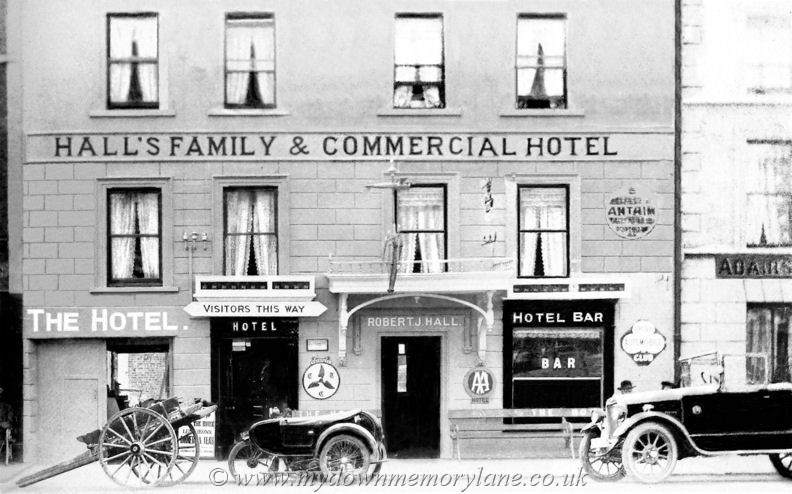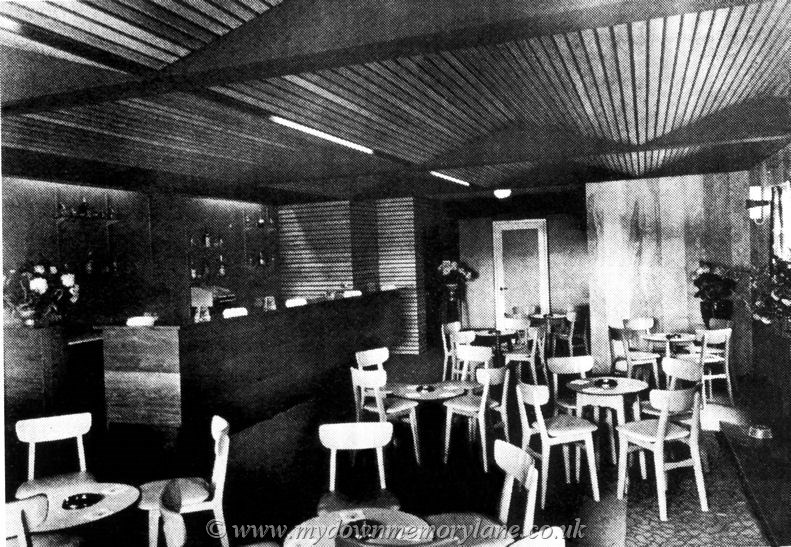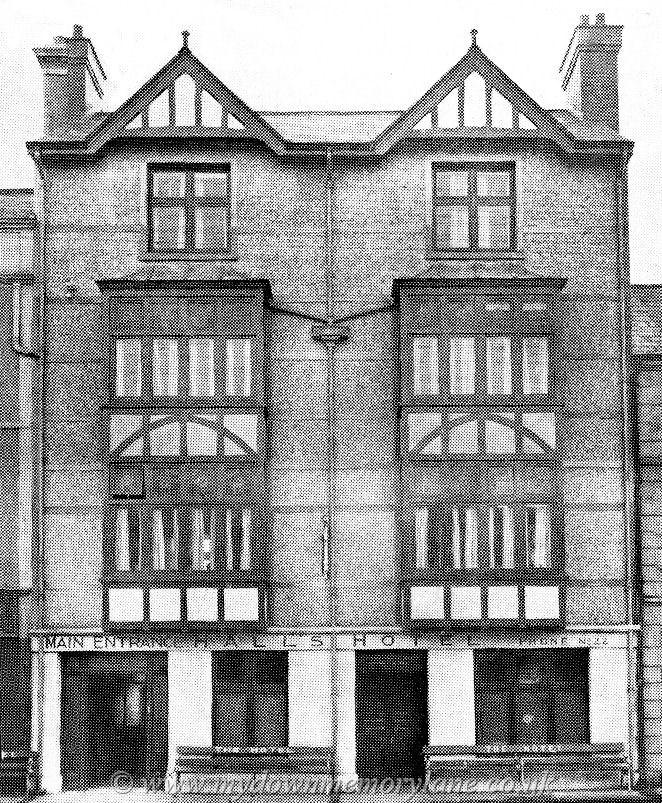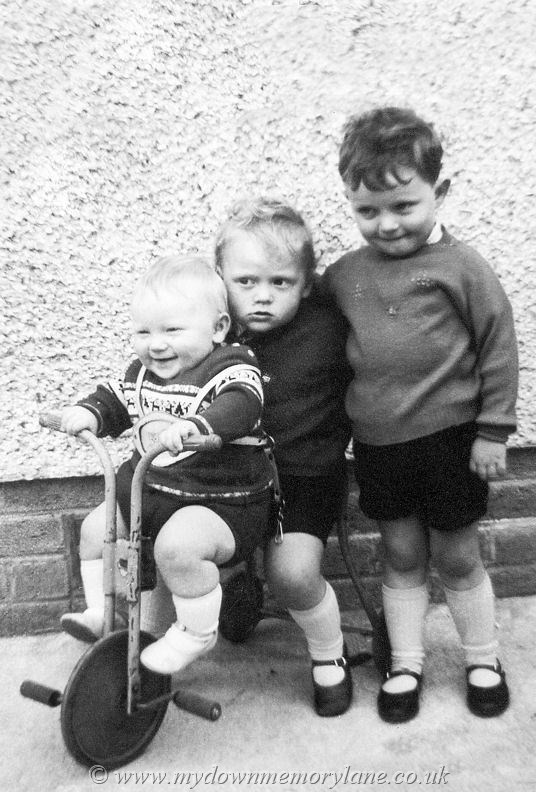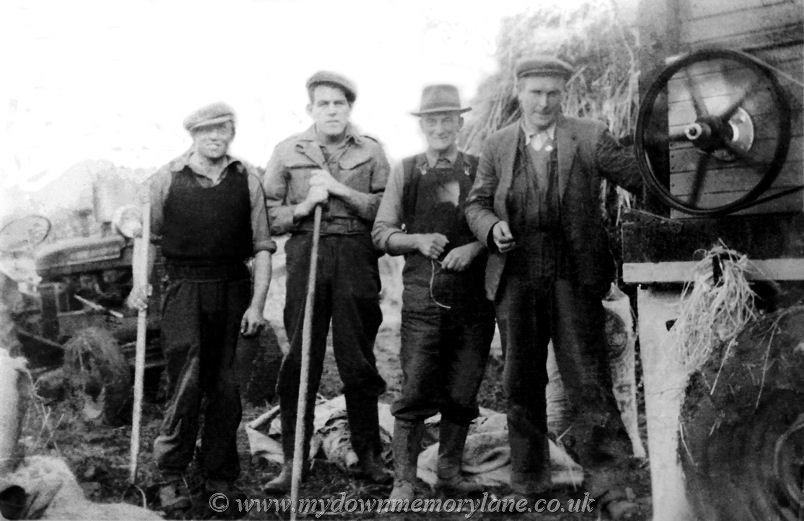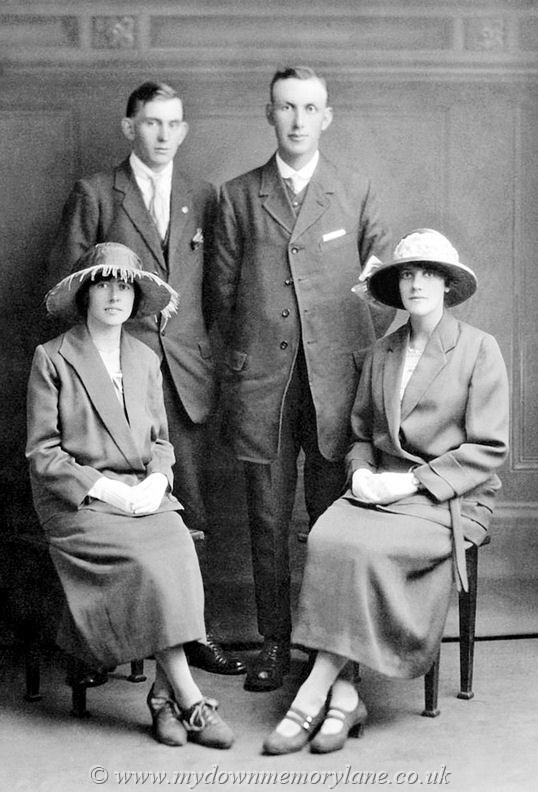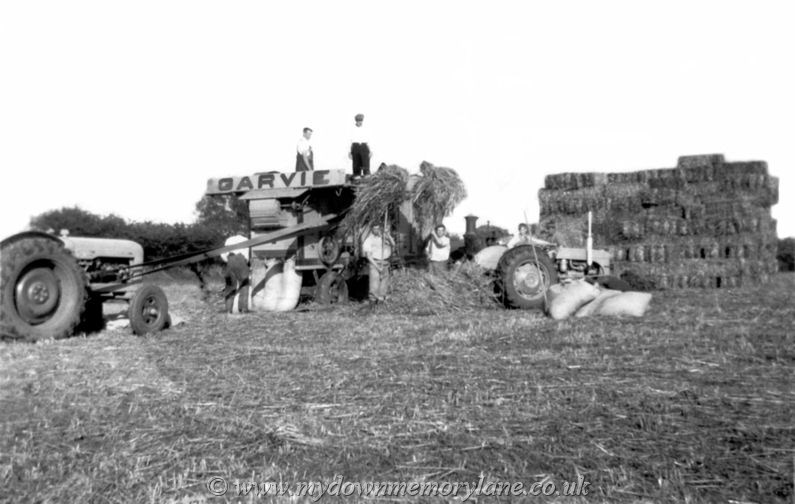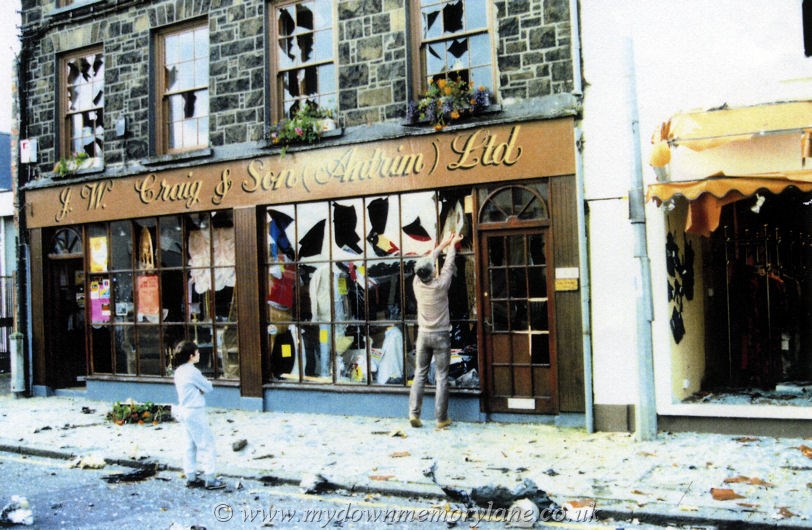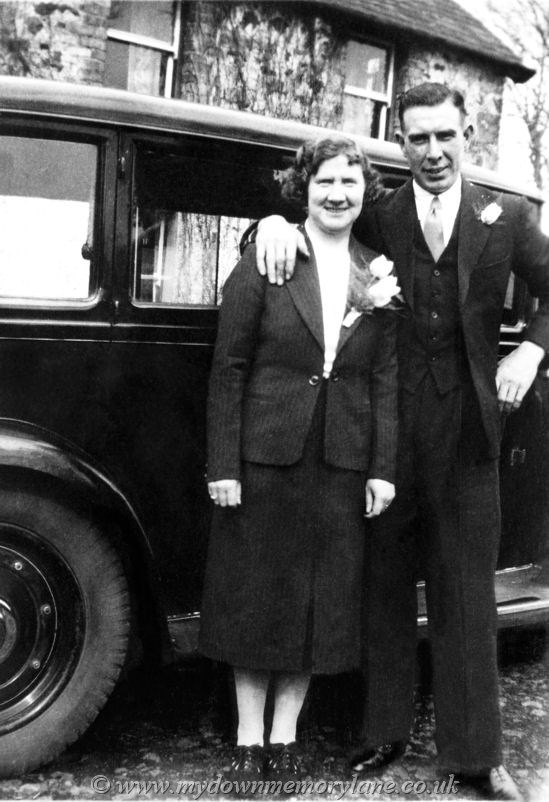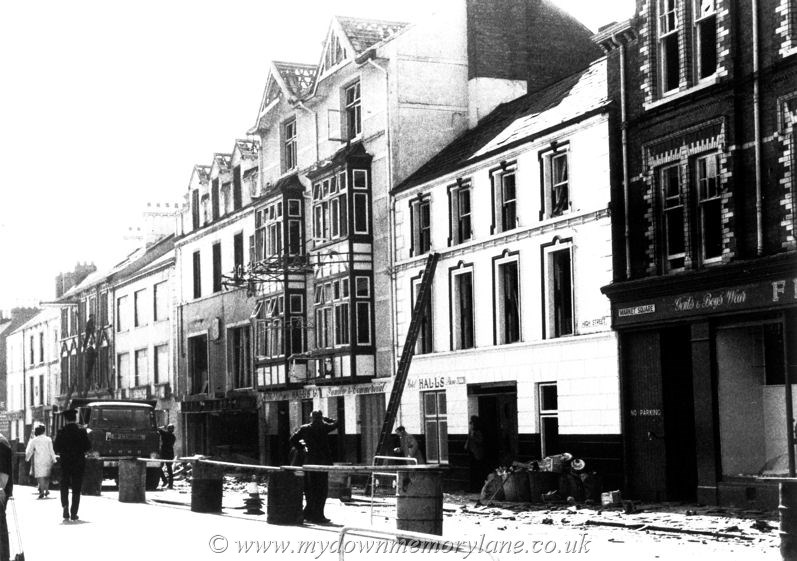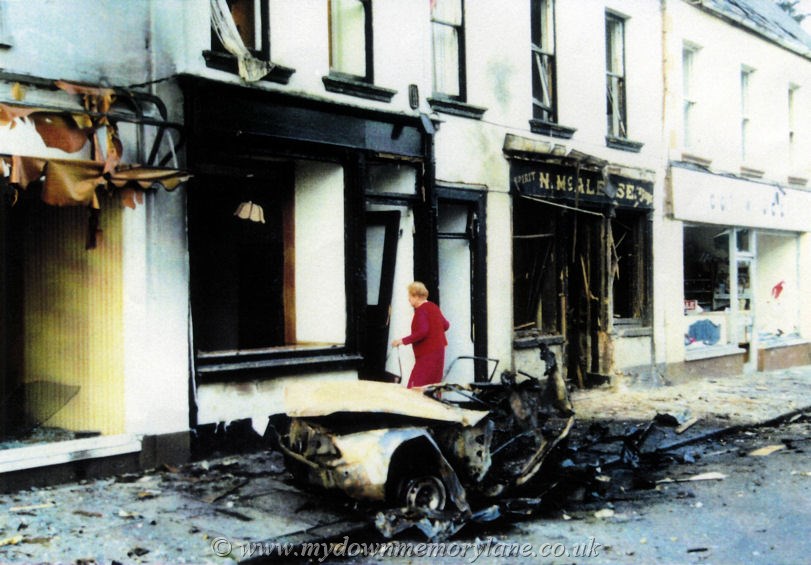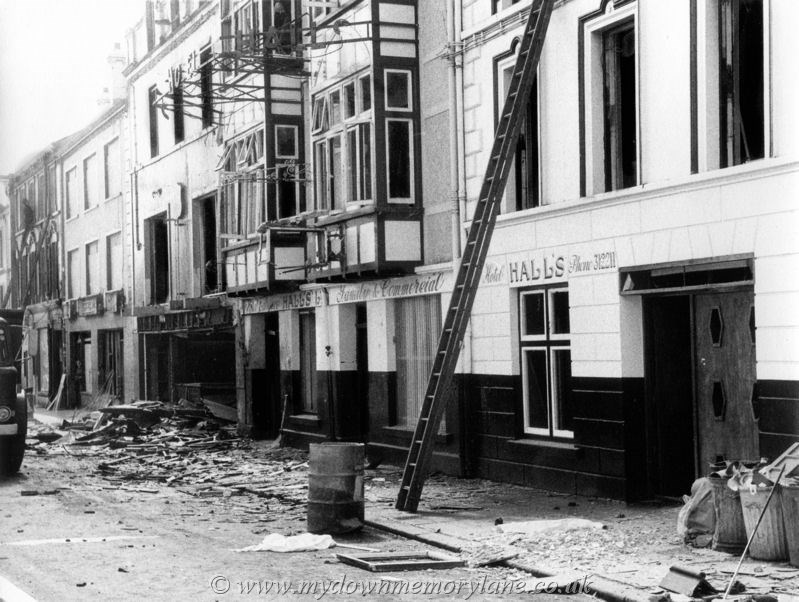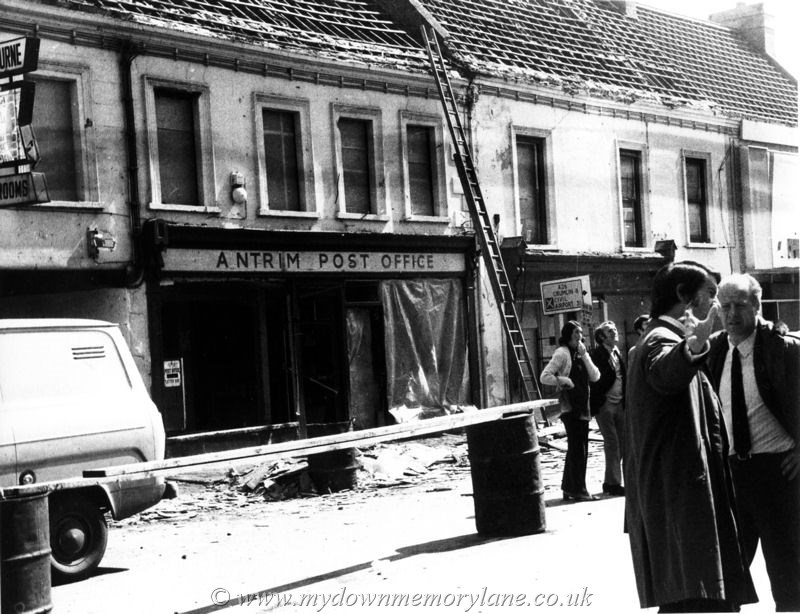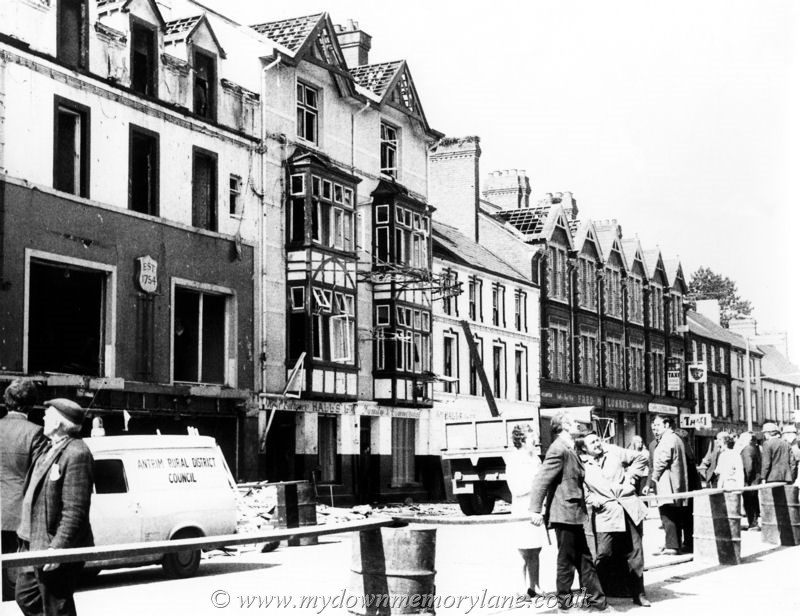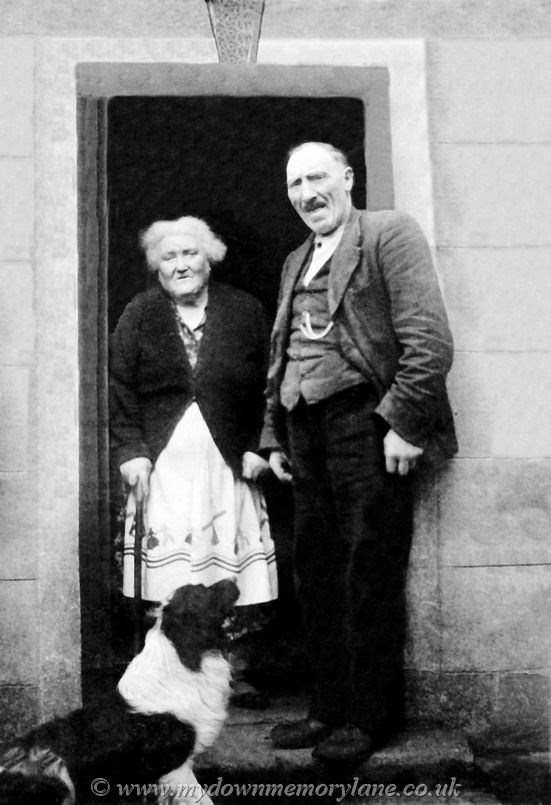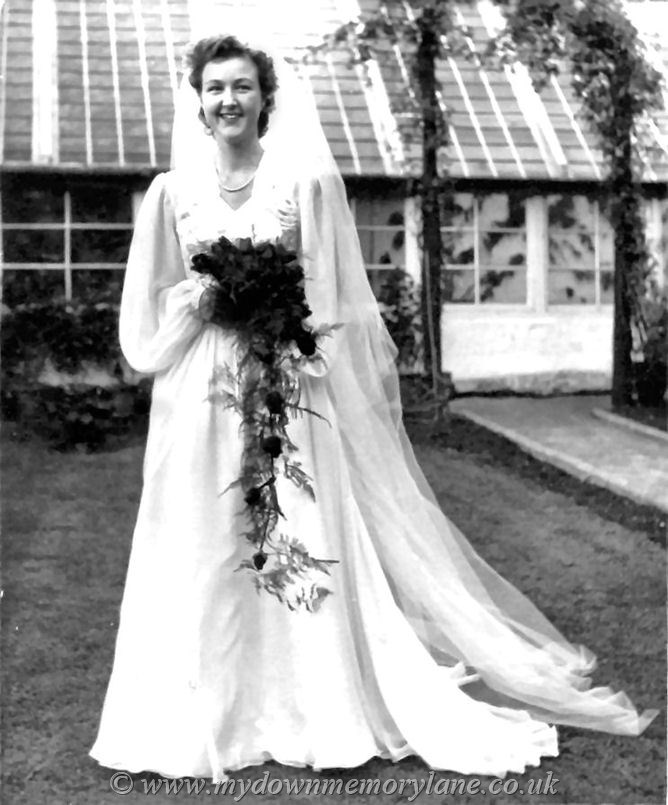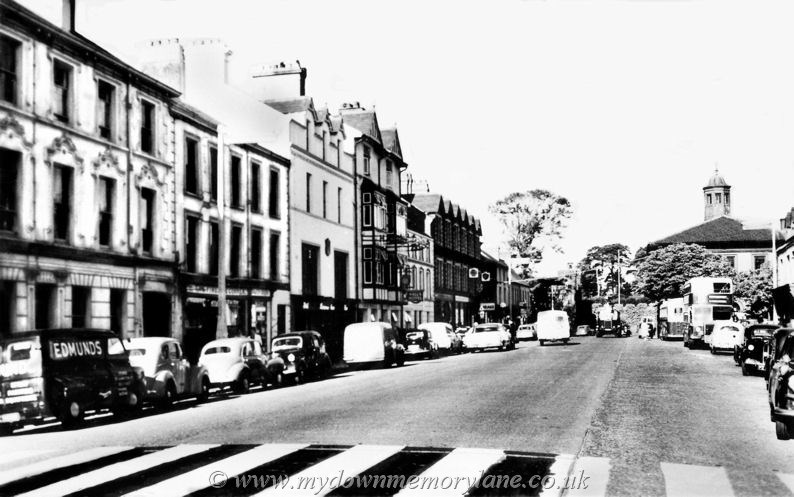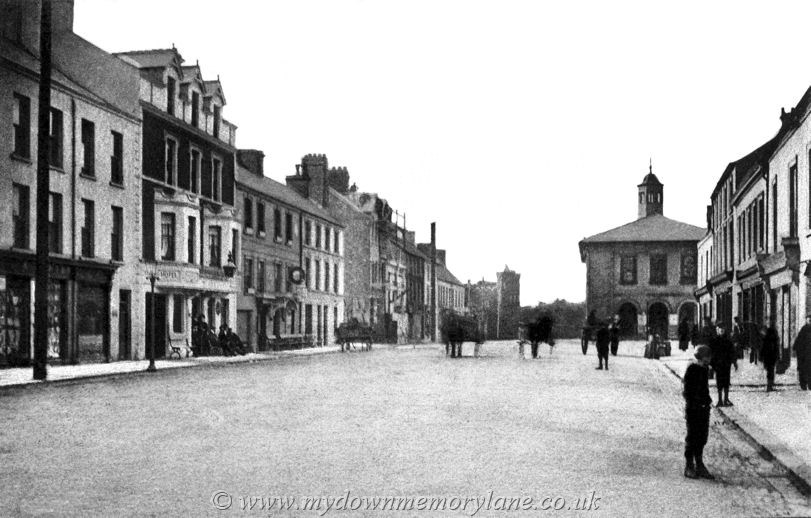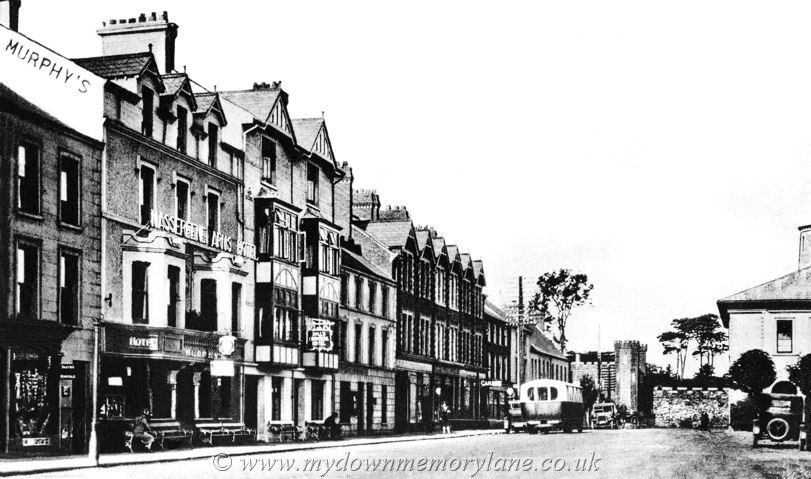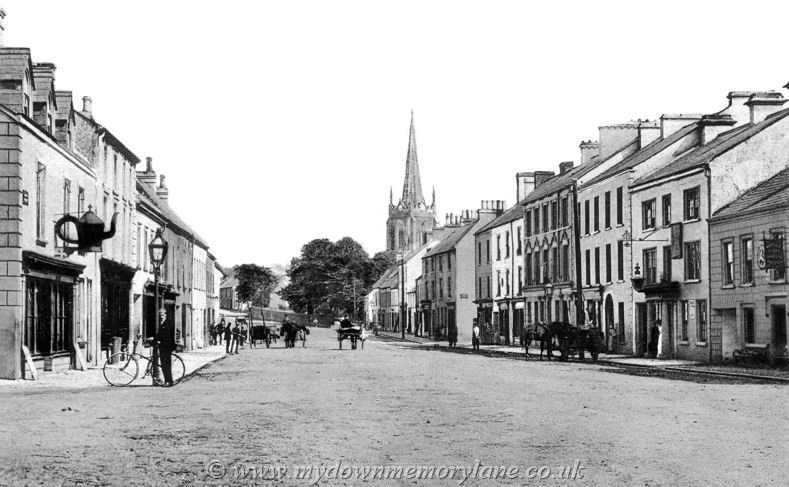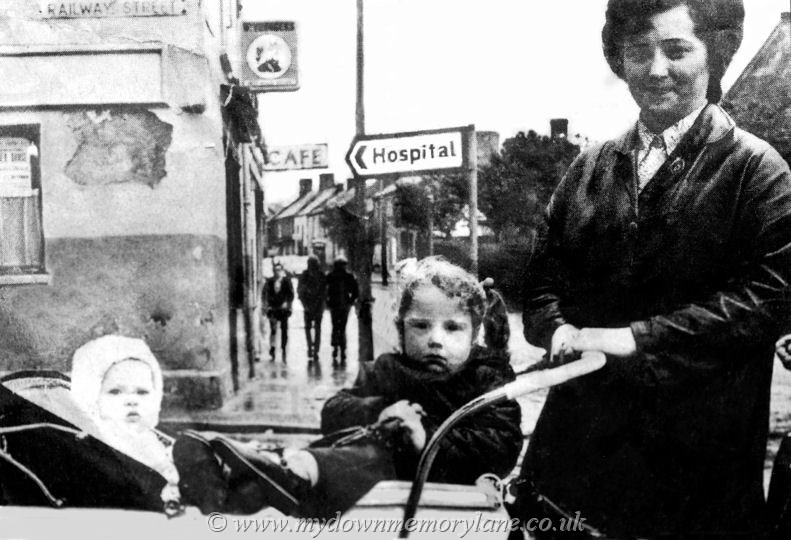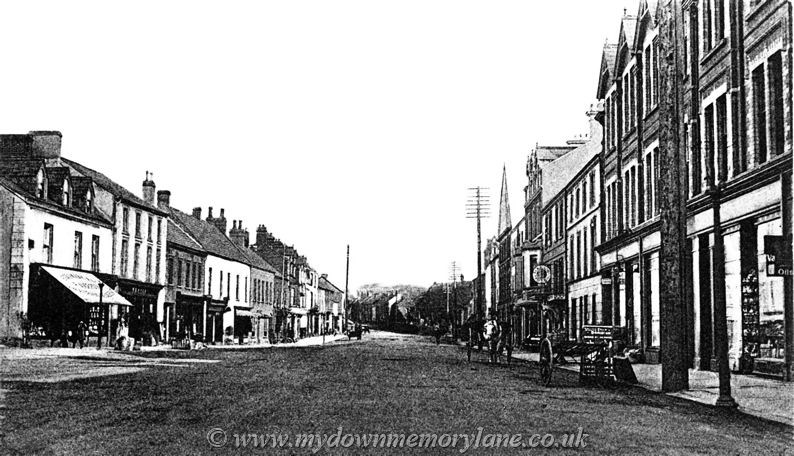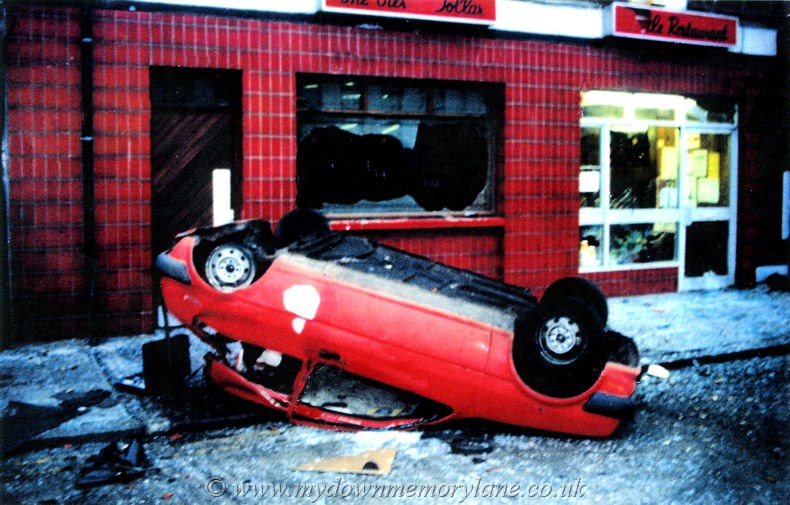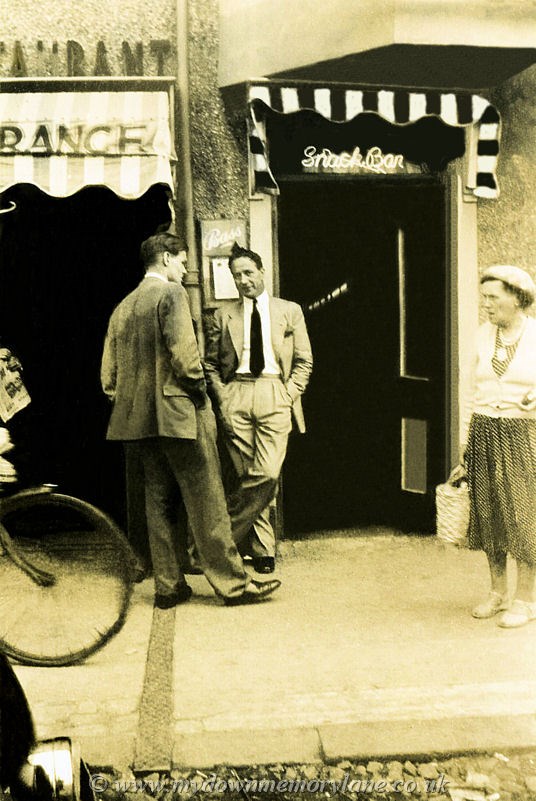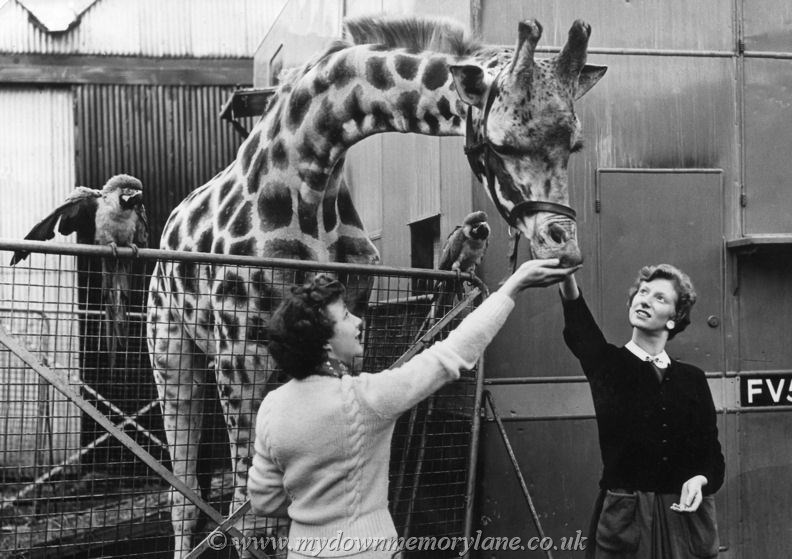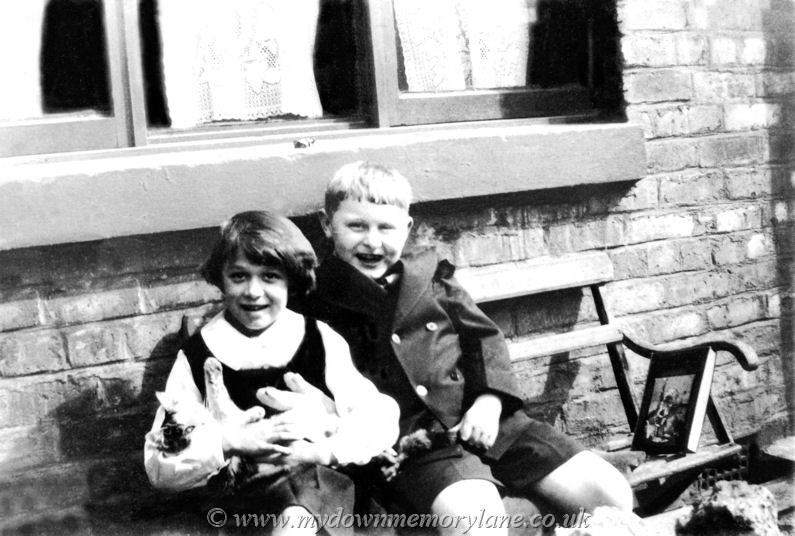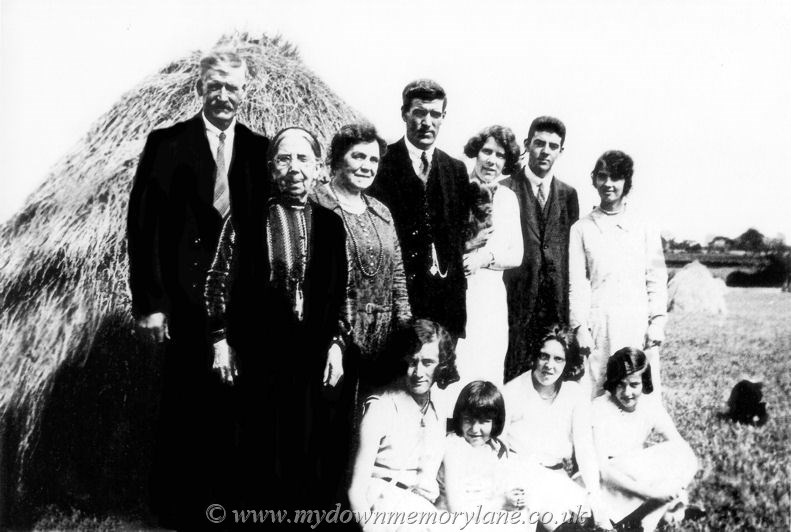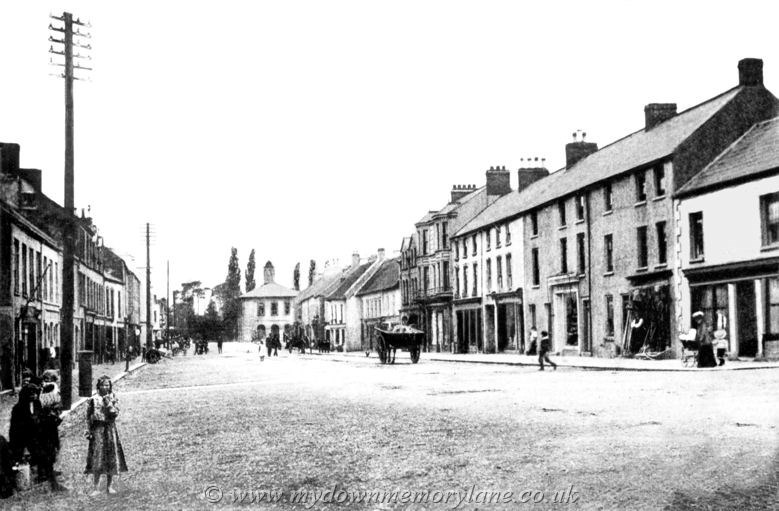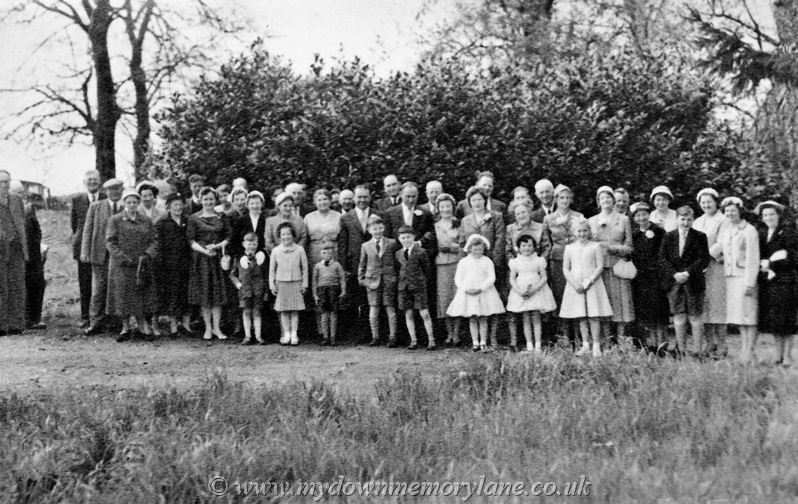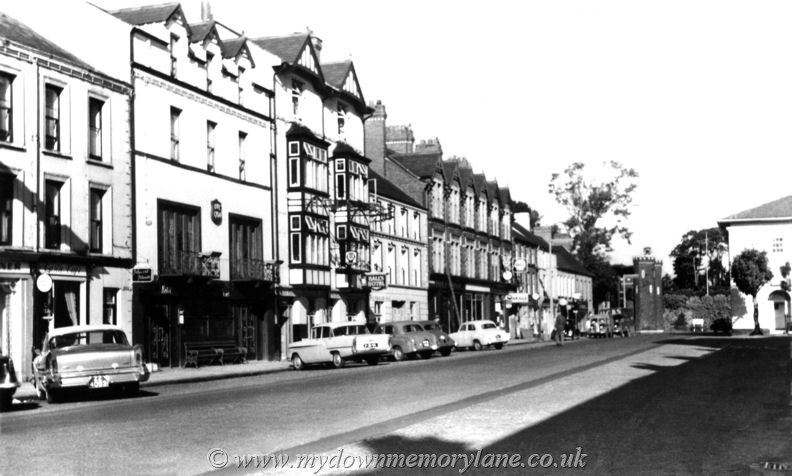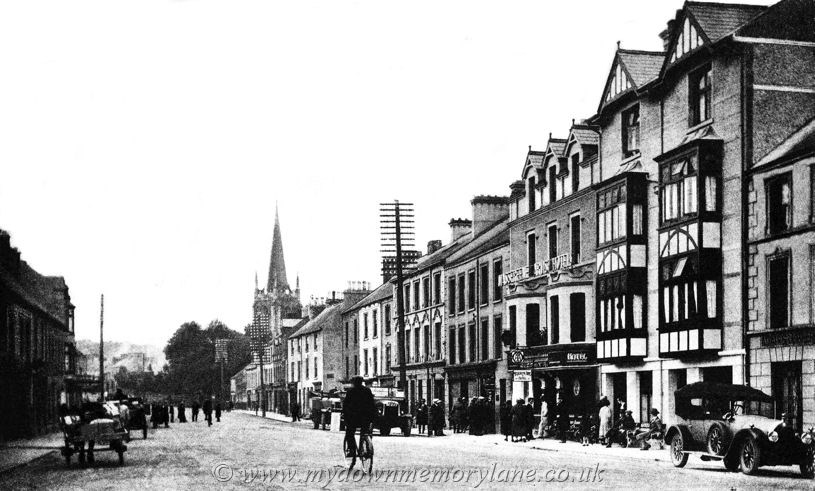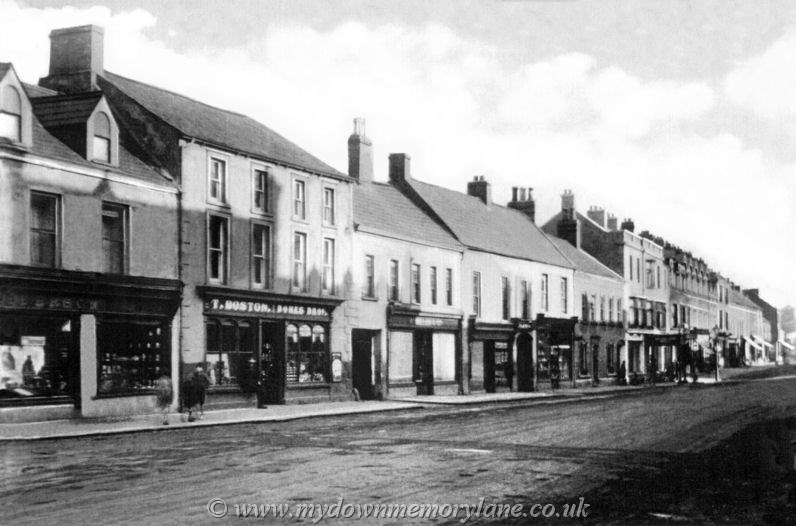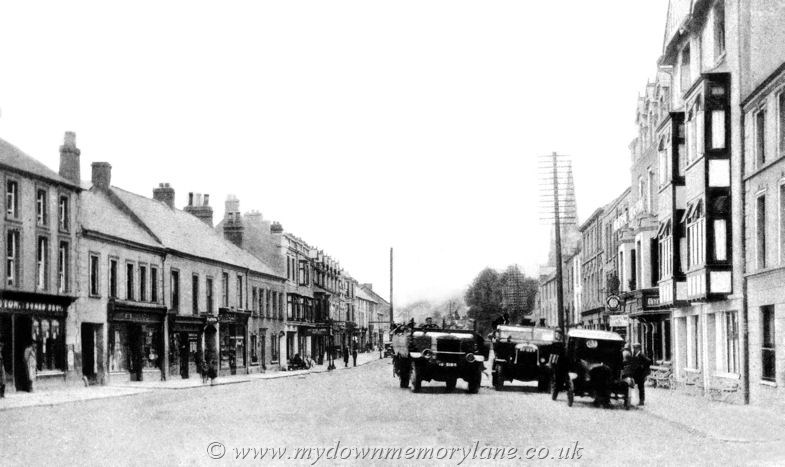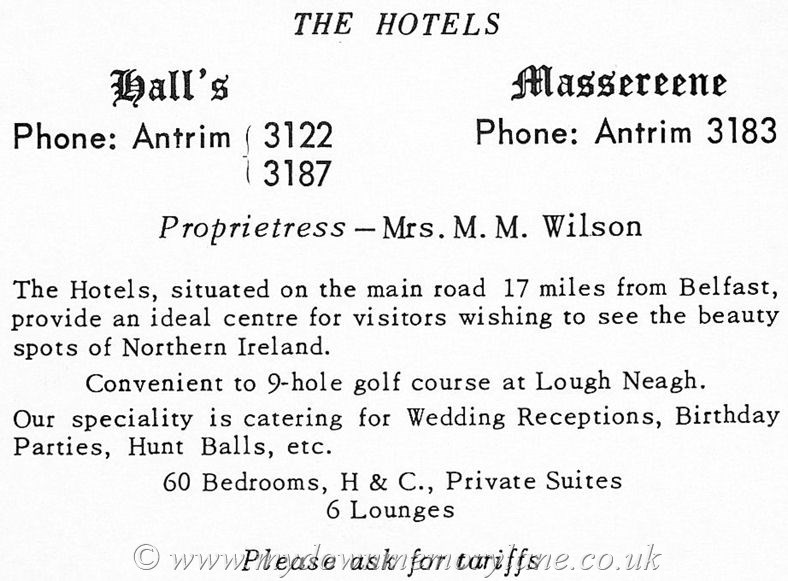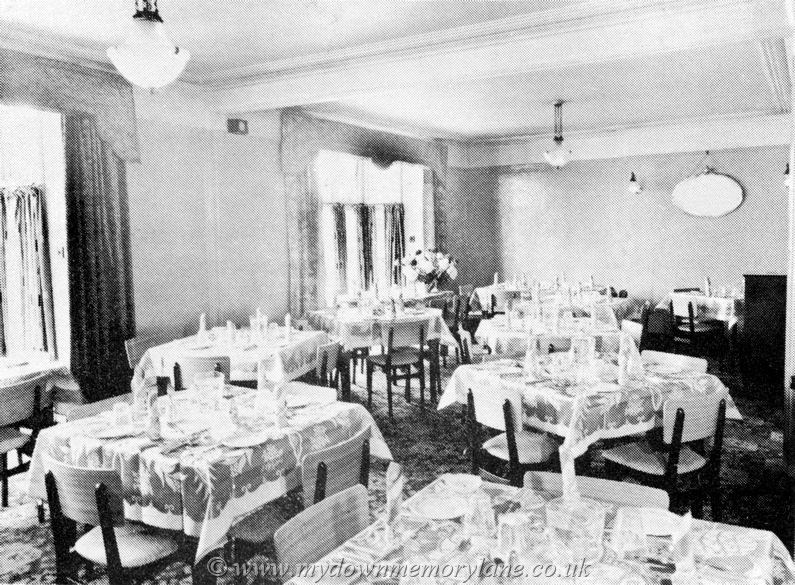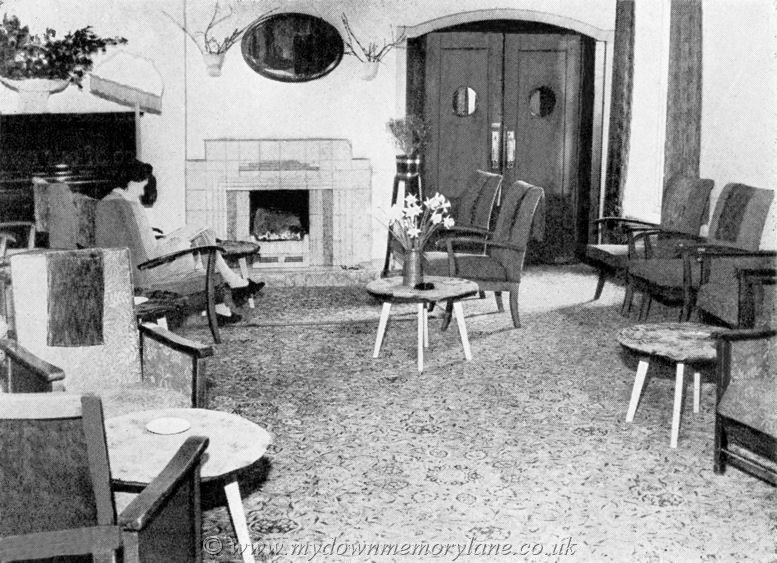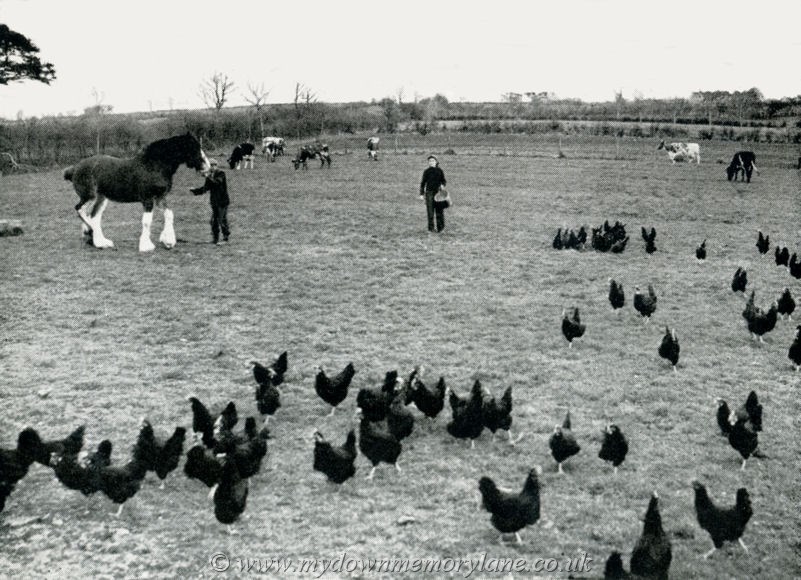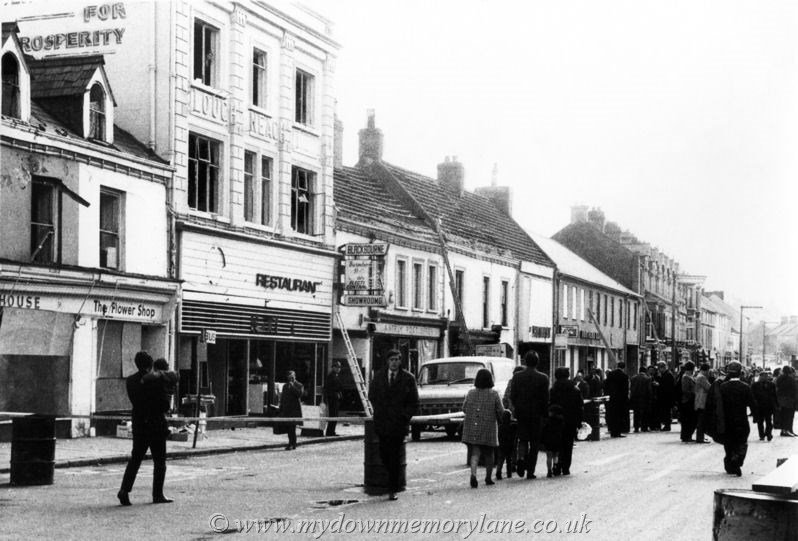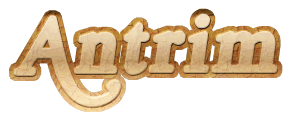HALL'S HOTEL 43
Taken in the 1920's this shows you the full name of the hotel. Three types
of mode of transport can be seen outside. To the right you can just see part
of Adair's Temperance Hotel which did not serve alcohol, unlike Hall's Hotel.
HALL'S HOTEL 154
This is the lounge bar area in the 1960's.
HALL'S HOTEL 155
This is part of the dining room area in Halls Hotel, going by the style of
the chairs it was taken in the 1940's.
HANNAN BROTHERS 2100
Getting their photograph taken in February 1966 on the trike are all smiles
Philip Hannan with his brothers Norman and Gary.
Though by the look on Norman's face he's not too happy!
HALL'S HOTEL 187
This is Hall's Hotel in High Street dated around the 1940's.
HARVEST TIME 2445
Hard at work bringing in the hay these men at the moment are all unknown.
HIGGINSON WEDDING 2210
This beautiful Wedding studio photograph is of the Higginson's. Standing on
the left is best man Ned Nickson and beside him is the groom George Higginson.
Seated on the left is bridesmaid Mary McCaulay and on the right is the bride
Margaret Elder.
HARVEST TIME 2912
Hard at work bringing in the hay these men at the moment are all unknown.
HIGH STREET 1442
This is the day when the heart of Antrim's High Street was torn out by car
bombs. Here you can see the remains of the car and the devestation it caused.
HIGH STREET 1443
This is the devestation caused that day in High Street when two car bombs
went off.
Like other shop owners here we have Brian Craig starting to try and save what
was left of his stock.
HEART WEDDING 1310
This is John Heart with his bride Rosie Heavron back at his father's house
in Murphy'stown road of the Ballymena road after their wedding in 1940.
HIGH STREET 1444
Here we are in High Street and you can see terrible damage to Hall's Hotel
and the other shops caused by the car bombs.
HIGH STREET 1445
This is the devestation caused that day in high Street, not a window left
in Lough Neagh Hotel or any of the businesses right up to the Northern Bank.
HIGH STREET 1446
Here we are in High Street and you can see terrible damage to Hall's Hotel
and the other shops caused by the car bombs
HIGH STREET 1450
This shows the damage the car bomb did to Hall's Hotel and the other buildings.
HERRON HOME 2276
Standing in the doorway of their home is Sarah & Robert Herron.
While Diamond the spaniel dog looks anxiously up at his master.
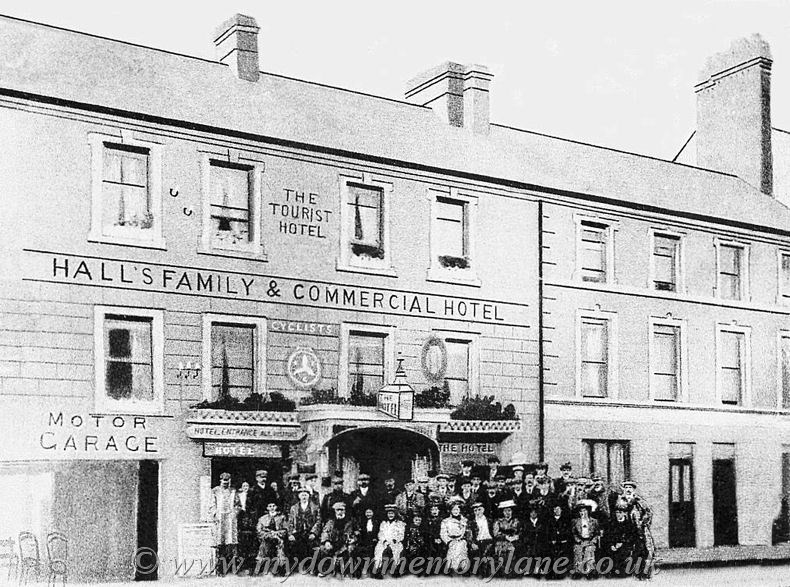
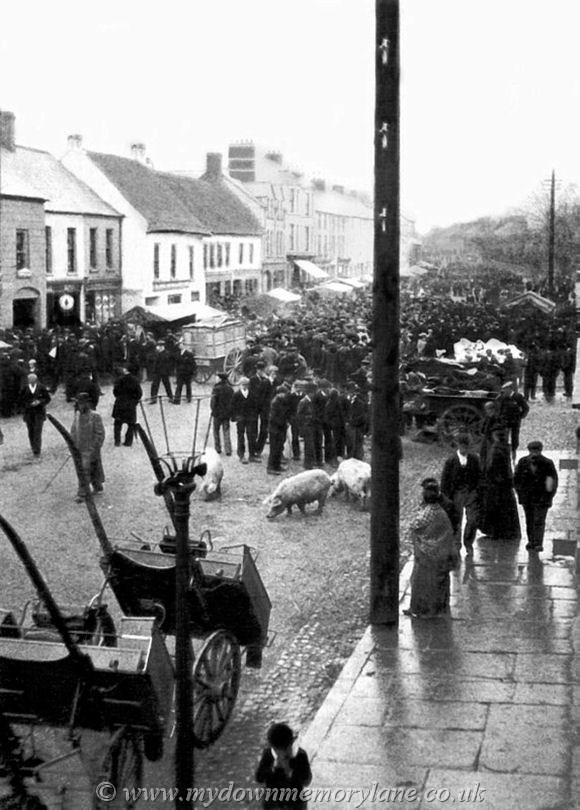
HIGH STREET
2748
This is High Street Antrim and the photograph was taken
from Hall's Hotel. Across the road you can see two thatched roof buildings,
well to give an idea of where you are the second thatched building is where
the entrance is to the shopping mall. Now that's out of the way let's talk
about the photograph. As usual it's wet and in the foreground are two jaunting
cars, behind them we have a few pigs not normally seen on the street but they
are for sale. You can see there are hundreds of people here stretching as
far back as the I can see, Some are here to buy from the many stalls set up
to sell their wares.
The rest are here hoping to get a job for it's Tuesday the 12th of May 1903
and this is the Hiring Fair. The hiring fairs were a humiliating experience
for many young workers. Labourers were forced to line up while farmers scrutinised
them for their working potential. The fairs were normally held twice a year,
once in spring and once in autumn, and usually coincided with the buying and
selling of horses. Bizarrely, inspecting workers teeth was a common practice,
suggesting most farmers viewed their potential employees in much the same
way as they saw their horses. Because so many people gathered at fairs, it
quickly turned into the major place for matching workers and employers. Later,
when wage rates and conditions were no longer officially set, the
hiring fair remained a useful institution, especially as much employment in
rural areas was by annual agreement. Prospective workers would gather in the
street or market place, often sporting some sort of badge or tool to denote
their speciality, shepherds held a crook or a tuft of wool, cowmen brought
wisps of straw, dairymaids carried a milking stool or pail and housemaids
held brooms or mops, this is why some hiring fairs were known as mop fairs.
Employers would look them over and, if they were thought fit, hire them for
the coming year or for 6 months, handing over a shilling to seal servants
would gather in order to bargain with prospective employers and, hopefully,
secure a position.The hiring included board and lodging for single employees
for the term with wages being paid at the end of the service. Men, women and
children as young as 7 would stand in the market place hoping to find a farmer
who would hire them. The wage would be about £6 for 6 months.Irish hiring
fairs had become well established by the eighteenth century.
Hiring fairs where places young people looking for work and would gather in
the centre of the town. Wealthier farmers found their farm hands for the next
few months at these hiring fairs. Workers who did succeed in finding a position
were generally hired for 6 months – or a ‘term’ as it was called.This
saved employers having to pay weekly wages to employees during times when
there was little farm work or labouring to be done. Contracts between employer
and employee were then sealed by the mutual slapping of palms – also
a common practice when buying and selling livestock. As security, employees
were often asked to leave a personal item with their new employer for collection
on their first day; whilst employers were expected to provide their future
employee with a small down payment. The amount paid to these hired workers
varied according to their location, the market prices farmers were receiving
for their produce at the time, and the worker’s age, gender and abilities.
Horsemen generally earned the top wage of £8-£12 per term,
followed by cowmen earning between £7-£10 and labourers who received
about £5-£7 per term. Out of all these different types of worker,
female employees undoubtedly had the greatest range of responsibilities including,
for example, cooking, washing, cleaning, dealing with small livestock as well
as working alongside men in the fields. Yet, women earned up to 50% less than
men - about £3 per term and stood no real chance of promotion.
Meanwhile children, who were generally put to tasks in and around the farmyard,
for example, feeding animals, or collecting eggs, earned about £3 or
£4 for 6 months of hard work. the arrangement.
HALL'S HOTEL 2727
This is Hall's Hotel in High Street Antrim and the Hotel has persuaded the
English & Scotch tourists that were there for the week to have their photograph
taken for publicity back in 1910. Now these tourists to me were the gentry
of the time going by the large plumed hats the ladies are wearing. Now in
the front row third from the left the gentleman has brought his rather large
dog with him and fifth is a lady all set for a drive in a car.
For she is wearing the long white driving coat and also has her hat tied down.
HALL'S HOTEL 56
This was Mrs. Joan McCreery who at the time was the proprietor of the hotel
on her wedding day in 1952.
The photograph was taken at the back of the hotel where they had a small garden
and in the background you can see the greenhouse where they grew all their
own vegetables, tomatoes and grapes.
HIGH STREET 2745
Taken in the 1950's this photograph shows not much has changed as in the way
of parking.
What puzzles me is the zebra crossing, there are only black markings in the
centre of the road.
Did that mean if you were on either side of the crossing with no black markings,
you were fair game for the motorist?
HIGH STREET 685
High Street in the early 1900's the road must have been recently swept. To
the left you can see Hall's Hotel and further down construction work is going
on with a man on the rooftop. Then you have the Court House and in the distance
the Barbican Gate.
HIGH STREET 688
To the left of the photograph taken in 1912 is Peter Conway's general store.
He sold mostly clothing but if he thought there was a ready market for an
item Peter would have it in his shop. Some of the advertisements outside his
shop show that he sold Lyons Tea, Pastry, Minerals and Players cigarettes.
Then we have the Massereene Arms Hotel followed next by Hall's Hotel, in the
distance are the Castle walls and the Barbican Gate.
HIGH STREET 686
This view of High Street in 1900, was taken from Market Square near the Courthouse
down towards All Saints' Church lets you see how wide Antrim's main thoroughfare
actually
was back then. The market was one of the backbones of the local economy and
coming down the street is a 'jaunting car' also there are several horses and
carts, but no cars to be seen. To the right of the street is Hall's Hotel
and the Massereene Arms, as well as the Savings Bank.
HAYSTACKS 1255
Getting their photograph taken after the fields have been harvested and haystacks
erected a thing you wouldn't see today.
At the moment the people and the year are unknown.
HIGH STREET 677
This is High Street in 1915, the round sign on the right is Hall's Hotel.
To the extreme right is a very large shop the name is unknown at the moment
but it was also an agent for the White Star Line which is advertised on the
back of the cart outside the shop. I wonder did anyone book the Titanic from
here? The street now had gas lighting supplied from Railway Street.
HIGH STREET 1341
This is the day when the heart of Antrim's High Street was torn out by car
bombs. Here you can see the remains of the car and the devestation it caused.
HALL'S HOTEL 2364
Here we are at High Street in Antrim in the year 1952 and you can see Hall's
Hotel entrance to their Snack Bar. Standing at the entrance on the left we
have three Ulster Grand Prix riders who were all members of the works Porcupine
A.J.S. race team, they were probably discussing their practice laps with each
other.
On the left is Robin Sherry and facing him is Jack Brett. Next to Jack and
hidden by Robin is Rod Coleman.
HIGH STREET 546
This is Rachel McCullough in 1970 with Shirley and Melanie in the pram.
Rachel is standing in High Street next to Railway Street. In the background
is the Ulster Bar and the cafe sign is of Billy's Fish & Chip shop.
The hospital sign was for the Massereene Hospital which is now Tesco's.
HE'S GOT A NECK! 1085
Getting fed by these two lovely Antrim lassies Elsie Cullen and Jean French
is George the Giraffe.
It was 1956 and the Suez crisis was happening and Chipperfields Circus could
not get back to England. The Ulster Wool Gatherers at Muckamore had large
sheds and they allowed the circus to stay there. By the way the two Macaws
looking on are unknown.
HARRY AND EDNA 912
Here in 1936 we have Edna and Harry - their last name is not known, but in
Edna's arms we have 'Frisky' the cat and Harry is holding on to its tail,
I hope he isn't going to pull it! Above on the windowsill Harry was left a
lead soldier while on his right side is a framed photograph.
HARD AT WORK 832
Taken in the Summer of 1957 while the Sixmilewater river was low we have this
band of men cleaning out the river at the rear of Hall's Hotel.
From the left we have Desmond Gillespie (Bar staff), John Tunney (Bar staff),
Bob Smyth (Farm Staff), Jackie Irvine (Carpenter/Jobber)
and Jimmy Bickerstaff (Farm Staff), the Hotel garden is on the right.
HIGH STREET 676
High Street in 1906 shows the vast difference in social classes. On the left
the girl in rags and bare feet while across the road, the mother wheeling
the pram with the little boy fully clothed with shoes on and a hat. Even the
little girl in the middle of the road in the distance has shoes and a smock
over her dress to keep it clean. I wonder is the girl on the left with the
bucket going for or going home with the milk. While across the road the man
stands proudly outside his shop displaying long tailed shovels, rakes ect.
HIGH STREET 675
High Street in the 1960, in the background is the Court House and the Barbican
Gate.
To the left is the Castle Cafe and the car outside, it's registration is ZZ
4093, then you have Hall's Hotel and in the distance is a garage.
HARKNESS WEDDING 2430
This is the wedding day of John Harkness and Pearl Coleman at Coleman's, Ballytweedy
27th April 1960
HIGH STREET 689
It's 1910 and as the sun starts to creep over the rooftops bringing light
to High Street the shops are already open for business, across the road is
T.Boston and I.Bones Bros Shop with a man sitting on the shop ledge.To the
left of the man are three boys one is blurred and the one facing the camera
has no shoes! When Alexander Irvine started selling newspapers of an evening
he also had no shoes ! Further up the street is the Antrim Arms Hotel and
beyond the shops already have their awnings out to protect the goods in the
shop windows.
HIGH STREET 687
On the right is Hall's Hotel and the Massereene Arms Hotel, just up from them
are two open topped Charabanc filled with tourists and the other most likely
waiting for the crowd standing outside.They are sitting right outside the
Savings Bank and in the distance as always the church steeple of All Saints'
Parish Church. The year is unknown.
HIGH STREET 678
Here in High Street in 1912 you can see two Charabanc one of which is just
pulling up in front of Hall's Hotel full of tourists after a day out, Over
to the left is the Antrim Arms Hotel and next is a Garage, in the background
to your right is the towering steeple of All Saints' Church.
HIGH STREET 679
Walking down High Street in 1915 in front of the man on the left is what looks
like a thatched pub. Next could be an Ironmongeries for above the shop window
is hanging a large pan. Then we have the man unloading supplies for the shop
from his cart, beyond him a lady is standing with two children talking to
two men. In front of the Court House is a crowd of men with horses and carts
so perhaps it's Thursday, Market day. Halfway across the road and opposite
Hall's Hotel is a young lady pushing her bicycle, personally I would be riding
it with what's lying on the road.
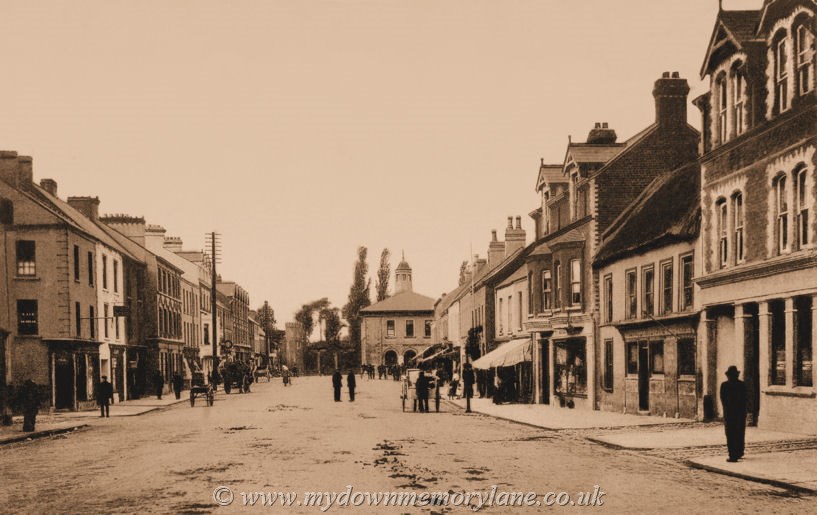
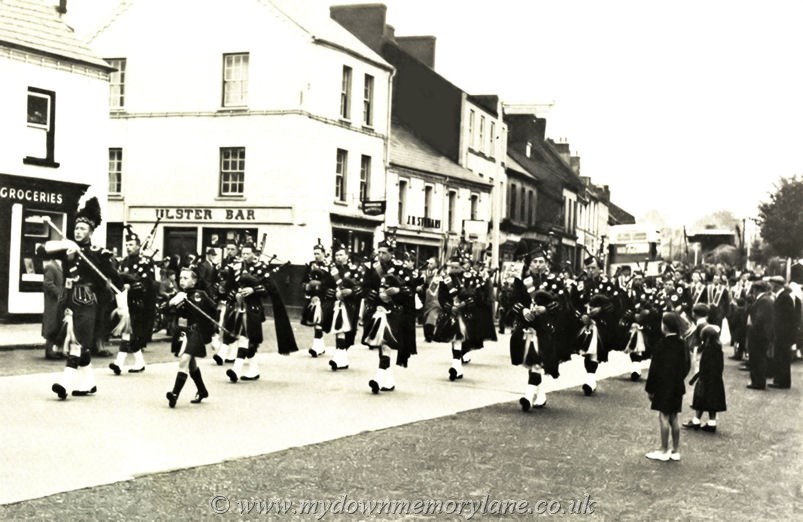
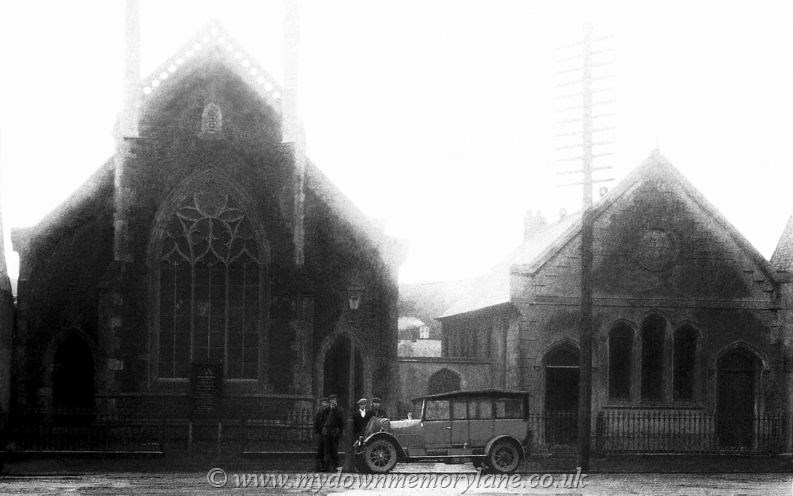
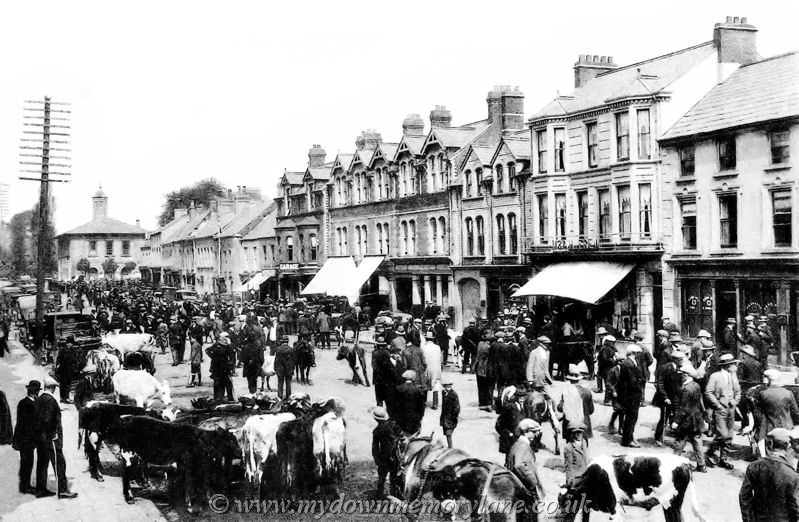
HIGH STREET 58
Here you see the band just coming into High Street from Church Street. Look
at the road, that is not a carpet it is a concrete strip.
The Drum Major is Robert McKelvey and proudly marching next to him is his
son Houston McKelvey who is now (2005) the Dean of St. Anne's Cathedral, Belfast.
Behind them you can see the Grocery shop, then Railway Street and next the
Ulster Bar from which you get the name for the area known locally as the "
Ulster Bar Corner ".
Date is 1952.
HIGH STREET PRESBYTERIAN CHURCH AND ORR SCHOOL
2
High street Presbyterian Church was originally called Second Antrim Presbyterian
Church after some church members left First Antrim Presbyterian Church because
of a disagreement. It was built in 1837 at a cost of about £940. When
the congregation got bigger they built a bigger church on the Steeple road.
The old church was renamed Church House with offices in it.
Orr school was built in 1900 and was named after the Rev. John Orr who was
the first minister of High Street Church. The school could be divided in two
by sliding partitions and for wintertime they had a great heating system.
HIGH STREET 150
The Massereene's in 1665 were given permission to hold six fairs a year but
by the 1800's only three were being held.
The weekly market for the buying and selling of local produce was started
in 1860. This photograph shows the Annual Livestock Fair.
The first shop to your right with the awning was M.& A.H. Frew who were
milliners, costumers and general drapers and was once the Antrim Business
Shop which included the Antrim Tourist Information Centre.
HALL'S HOTEL 3091
This was a brochure showing the prestige and elegance of the tea room in Hall's
Hotel.
It must have been a joy and a pleasure to go there for a meal or just a cup
of tea and scones.
HALL'S HOTEL 3864
Here having a quiet read of the paper is this lady sitting
beside the fire keeping warm as it is only April. This is part of the lounge
area in the late 1940's, they must have had sing songs there for there is
a piano against the wall.
HALL'S HOTEL 3865
In the hotel's brochure it states that all their food produce is local and
fresh, well here's the proof they have their own farm, the Shire horse was
Mr Abercrombie's pride and joy and had the horse shown at Royal Ulster Agricultural
Society exhibition at the Kings Hall.
When you look at the photograph it's ironic that here the hens are free range
and that was 71 years ago! (2021)
HIGH STREET 1448
The destruction of the shops in High Street. not a slate
left on the roofs and every window blown out. As you can see the Post Office
took a hammering.
3
Pages:
